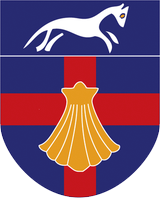Design & Technology
Intent
At Radley Primary School, our intent for Design Technology (DT) is to provide high-quality learning that equips our pupils with the knowledge and skills needed to design and make purposeful products. We aim to foster a sense of creativity, critical thinking, and resilience, enabling our pupils to become proficient designers, problem solvers, and innovators.
Through DT, we strive to:
- Develop pupils' understanding of the key principles and concepts related to design, materials, and technologies.
- Encourage our pupils to use their imagination and think creatively when generating and developing ideas for designing products.
- Teach pupils how to use and select appropriate tools, equipment, and materials safely and competently.
- Enable pupils to develop a range of practical skills, including measuring, cutting, shaping, joining, and finishing materials.
- Teach pupils about real-life applications of DT, helping them understand its relevance in various industries and everyday life.
- Foster a collaborative learning environment where pupils work effectively as part of a team, respecting and valuing each other's contributions.
- Develop pupils' ability to evaluate, refine, and improve their own designs, considering the function, aesthetics, and intended user experience.
- Promote an appreciation for sustainable design and responsible use of resources, encouraging pupils to consider the environmental impact of their choices.
Implementation
To deliver an outstanding DT curriculum, we use a range of strategies and practices:
Curriculum Design and Planning
- Our curriculum is carefully designed to have clear progression and build upon prior knowledge, ensuring that all pupils can achieve their potential.
- The Cornerstones Curriculum has a well-defined scheme of work that aligns with the National Curriculum for Design and Technology.
- The scheme incorporates a range of projects and challenges, progressively developing pupils' skills and knowledge in line with their age and abilities.
- Opportunities are provided for cross-curricular links, particularly with mathematics, science, and art.
- Our planning includes opportunities for pupils to apply their skills and knowledge in real-life contexts through project-based learning.
Teaching and Learning
- Our teachers use a variety of teaching strategies, such as whole-class teaching, guided group work, and individual activities, to meet the diverse needs of our learners.
- Design and Technology is a practical subject, and this is the focus throughout, allowing pupils to design and make products using a variety of tools and materials.
- Our curriculum engages the children in open-ended tasks that promote creative and critical thinking, problem-solving, and the application of design principles.
- Clear learning objectives are shared with students, and progress is assessed and monitored regularly.
- Feedback is provided to students to support their development and guide them towards achieving their targets.
Resources and Environment
- We provide a well-equipped and safe learning environment, with access to an assortment of tools and materials appropriate for different age groups.
- Our DT resources include computers, software, modelling materials, textiles, carpentry tools, and electronic components.
- The school partnership with Radley College also enables us to support pupils' understanding of DT concepts and allow them to explore more advanced technologies, such as 3D printing and robotics.
Impact
At Radley Primary, we assess the impact of our DT provision through multiple avenues, including:
- Pupil Achievement
- Pupils' progress in DT is regularly assessed against clear learning objectives and success criteria.
- We celebrate and showcase pupils' design outcomes, demonstrating their growth and attainment within the subject.
- Pupils develop a sense of pride, confidence, and empowerment as they see their ideas transformed into tangible products.
Engagement and Attitude
- Pupil enjoyment and enthusiasm for DT is fostered through engaging lessons and a relevant and purposeful curriculum.
- Pupils are actively involved in making decisions, reflecting on their work, and giving and receiving feedback from peers and teachers.
- The collaborative environment encourages mutual respect, fostering positive attitudes towards teamwork and valuing others' contributions.
Transferable Skills and Knowledge
- Pupils develop a broad range of transferable skills, including critical thinking, problem-solving, creativity, communication, and resilience.
- They gain an understanding of design processes, technical skills, and the use of tools and materials, which can be applied across different subjects and future career paths.
Destinations and Future Aspirations
- The exposure to real-life applications of DT and insights into relevant industries helps pupils develop a clearer understanding of future career possibilities.
- Our aim is to inspire pupils to pursue further study or careers related to design, engineering, architecture, or other creative fields.




